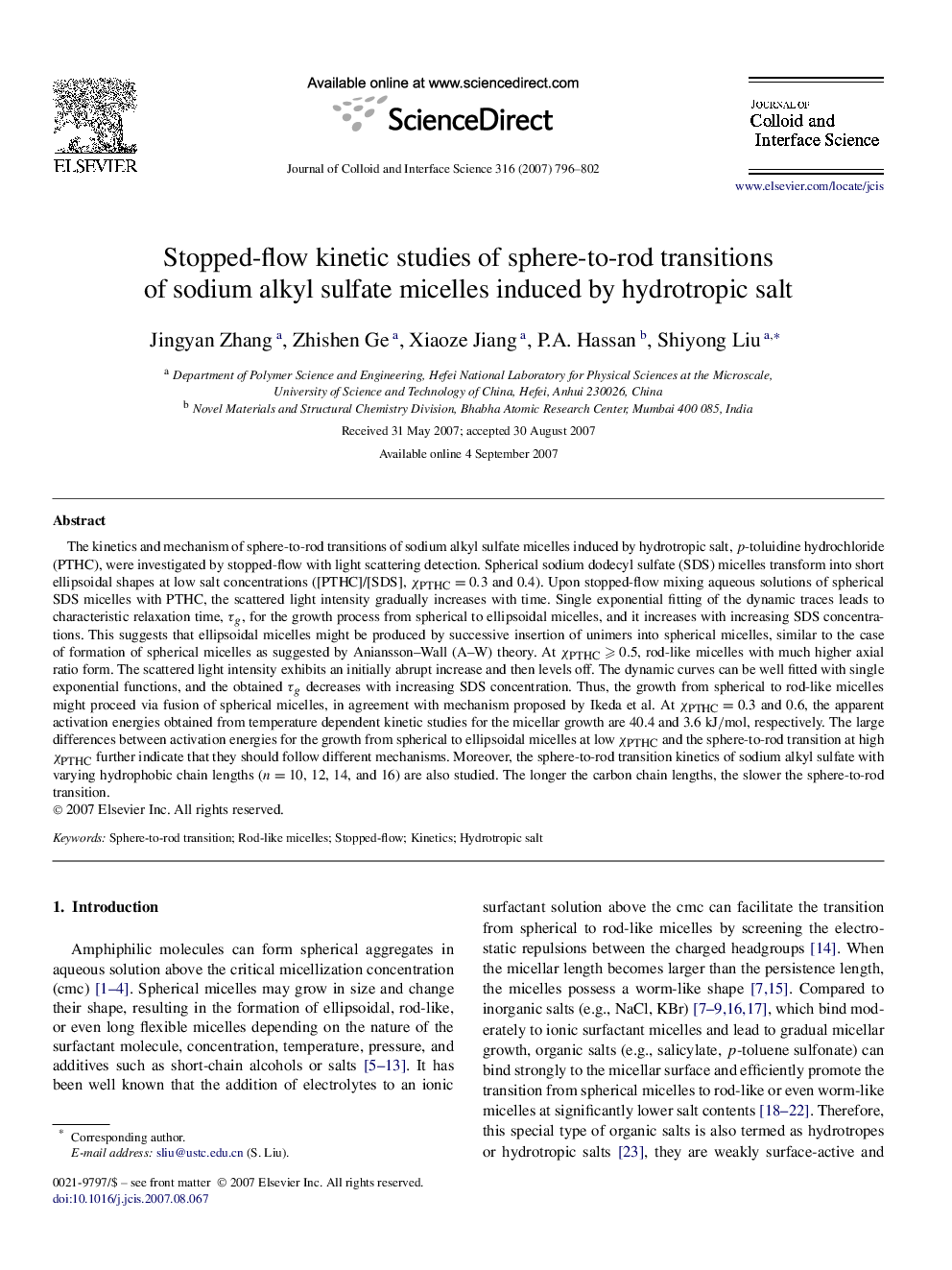| Article ID | Journal | Published Year | Pages | File Type |
|---|---|---|---|---|
| 612067 | Journal of Colloid and Interface Science | 2007 | 7 Pages |
The kinetics and mechanism of sphere-to-rod transitions of sodium alkyl sulfate micelles induced by hydrotropic salt, p -toluidine hydrochloride (PTHC), were investigated by stopped-flow with light scattering detection. Spherical sodium dodecyl sulfate (SDS) micelles transform into short ellipsoidal shapes at low salt concentrations ([PTHC]/[SDS], χPTHC=0.3χPTHC=0.3 and 0.4). Upon stopped-flow mixing aqueous solutions of spherical SDS micelles with PTHC, the scattered light intensity gradually increases with time. Single exponential fitting of the dynamic traces leads to characteristic relaxation time, τgτg, for the growth process from spherical to ellipsoidal micelles, and it increases with increasing SDS concentrations. This suggests that ellipsoidal micelles might be produced by successive insertion of unimers into spherical micelles, similar to the case of formation of spherical micelles as suggested by Aniansson–Wall (A–W) theory. At χPTHC⩾0.5χPTHC⩾0.5, rod-like micelles with much higher axial ratio form. The scattered light intensity exhibits an initially abrupt increase and then levels off. The dynamic curves can be well fitted with single exponential functions, and the obtained τgτg decreases with increasing SDS concentration. Thus, the growth from spherical to rod-like micelles might proceed via fusion of spherical micelles, in agreement with mechanism proposed by Ikeda et al. At χPTHC=0.3χPTHC=0.3 and 0.6, the apparent activation energies obtained from temperature dependent kinetic studies for the micellar growth are 40.4 and 3.6 kJ/mol, respectively. The large differences between activation energies for the growth from spherical to ellipsoidal micelles at low χPTHCχPTHC and the sphere-to-rod transition at high χPTHCχPTHC further indicate that they should follow different mechanisms. Moreover, the sphere-to-rod transition kinetics of sodium alkyl sulfate with varying hydrophobic chain lengths (n=10n=10, 12, 14, and 16) are also studied. The longer the carbon chain lengths, the slower the sphere-to-rod transition.
Graphical abstractFigure optionsDownload full-size imageDownload as PowerPoint slide
